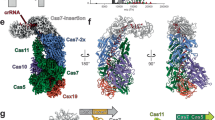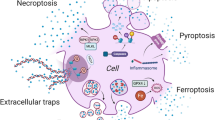Abstract
Human peripheral blood mononuclear cells (PBMCs) were activated using anti-CD3/CD28 (HIT3A/CD28.2) resulting in degradation of IkBα, an inhibitor of NFkB, relative to unactivated cells. Degradation of IkBα began by 30 min and proceeded for at least 5 h. Calpeptin, a calpain inhibitor, inhibited IkBα degradation in a time- and dose-dependent manner. Furthermore, calpain inhibition increased IkBα levels compared to nonactivated controls. Recombinant IkBα was incubated with purified porcine m-calpain in the presence of 0.1% Triton X-100, and the degradation products were monitored by SDS-PAGE and sequenced. Most of the degradation products were peptides derived from calpain, but one was derived from IkBα cleaved between amino acids 50 and 51 (glutamine and glutamic acid). The liberated fragment included the entire signal response domain (SRD), a region containing key serine and threonine residues necessary for phosphorylation by the IKKinase complex and sites required for ubiquitination. The results suggest that calpain plays an important role in IkBα degradation, a crucial event in T cell activation.
Similar content being viewed by others
references
Malek, S., Huxford, T., and Ghosh, G. 1998. Ikappa Balpha functions through direct contacts with the nuclear localization signals and the DNA binding sequences of NF-kappaB. J. Biol. Chem. 273(39):25427–25435.
Jacobs, M. D. and Harrison, S. C. 1998. Structure of an Ikappa-Balpha/NF-kappaB complex. Cell 95(6):749–758.
Haskill, S., Beg, A. A., Tompkins, S., Morris, J. S., Yurochko, A. D., Johannes, A. S., Mondal, K., Ralph, P., and Baldwin, A. S. 1991. Characterization of an immediate-early gene induced in adherent monocytes that encodes I kappa B-like activity. Cell 65(7):1281–1289.
Baldwin, A. S. 1996. The NF-kappa B and I kappa B proteins: new discoveries and insights. Ann. Rev. Immunol. 14:649–681.
Duckett, C. S., Perkinds, N. D., Kowalik, T. F., Schmid, R. M., Huang, E. S., Baldwin, A. S., and Nabel, G. J. 1993. Dimerization of NF-KB2 with RelA(p65) regulates DNA binding, transcriptional activation, and inhibition by an I kappa B-alpha (MAD-3). Molec. Cell. Biol. 13(3):1315–1322.
Sears, C., Olesen, J., Rubin, D., Finley, D., and Maniatis, T. 1998. NF-kappa B p 105 processing via the ubiquitin-proteasome pathway. J. Biol. Chem. 273(3):1409–1419.
Ganchi, P. A., Sun, S. C., Greene, W. C., and Ballard, D. W. 1992. I kappa B/MAD-3 masks the nuclear localization signal of NF-kappa B p65 and requires the transactivation domain to inhibit NF-kappa B p65 DNA binding. Mol. Biol. Cell. 3(12):1339–1352.
Huxford, T., Huang, D. B., Malek, S., Ghosh, G. 1998. The crystal structure of the IkappaBalpha/NF-kappaB complex reveals mechanisms of NF-kappaB inactivation. Cell 95(6):729–731.
Palombella, V. J., Rando, O., Goldberg, A., and Maniatis, T. 1994. The ubiquitin-proteasome pathway is required for processing the NF-kappa B1 precursor protein and the activation of NF-kappa B. Cell 78:773–785.
Han, Y., Weinman, S., Boldogh, I., Walker, R. K., and Brasier, A. R. 1999. Tumor necrosis factor-alpha-inducible IkappaBalpha proteolysis mediated by cytosolic m-calpain. A mechanism parallel to the ubiquitin-proteasome pathway for nuclear factor-kappab activation. J. Biol. Chem. 274(2):787–794.
Trushin, S. A., Pennington, K. N., Algeciras-Schimnich, A., and Paya, C. V. 1999. Protein kinase C and calcineurin synergize to activate IkappaB kinase and NF-kappaB in T lymphocytes. J. Biol. Chem. 274(33):22923–22931.
Kahn-Perles, B., Lipcey, C., Lecine, P., Olive, D., and Imbert, J. 1997. Temporal and subunit-specific modulations of the Rel/NF-kappaB transcription factors through CD28 costimulation. J. Biol. Chem. 272(35):21774–21783.
Chen F., Lu, Y., Kuhn, D. C., Maki, M., Shi, X., Sun, S. C., and Domors, L. M. 1997. Calpain contributes to silica-induced I kappa B-alpha degradation and nuclear factor-kappa B activation. Arch. Biochem. Biophys. 342(2):383–388.
Schaecher, K., Goust, J. M., and Banik, N. L. 2001. The effects of calpain inhibition upon IL-2 and CD25 expression in human peripheral blood mononuclear cells. J. Neuroimmunol. 119(2):333–342.
Deshpande, R. V., Goust, J. M., Chakrabarti, A. K., Barbosa, E., Hogan, E. L., and Banik, N. L. 1995. Calpain expression in lymphoid cells. Increased mRNA and protein levels after cell activation. J. Biol. Chem. 270(6):2497–2505.
Selliah, N., Brooks, W. H., and Roszman, T. L. 1996. Proteolytic cleavage of alpha-actinin by calpain in T cells stimulated with anti-CD3 monoclonal antibody. J. Immunol. 156(9):3215–3221.
Shields, D. C., Schaecher, K. E., Saido, T. C., and Banik, N. L. 1999. A putative mechanism of demyelination in multiple sclerosis by a proteolytic enzyme, calpain. Proc. Natl. Acad. Sci. USA 96(20):11486–11491.
Laemmli, U. K. 1970. Cleavage of structural proteins during the assembly of the head of bacteriophage T4. Nature 227:680–685.
Towbin, H, Stachlin, T. and Gordon, J. 1979. Electrophoretic transfer of proteins from polyacrylamide gels to nitrocellulose sheets: procedure and some applications. Proc. Natl. Acad. Sci. USA 76:4350–4354.
Vaessen, R. T., Krieke, J., and Groot, G. S. 1981. Protein transfer to nitrocellulose filters. A simple method for quantitation of single proteins in complex mixtures. FEBS Lett. 124:193–196.
Manna, S. K. and Aggarwal, B. B. 2000. Vesnarinone suppresses TNF-induced activation of NF-kappa B, c-Jun kinase, and apoptosis. J. Immunol. 164:5815–5825.
Imbert, V., Rupec, R. A., Livolsi, A., Pahl, H. L., Traenckner, E. B. M., Mueller-Dieckmann, C., Farahifar, D., Rossi, B., Auberger, P., Baouerie, P. A., and Poyron, J. F. 1998. Tyrosine phosphorylation of I kappa B-alpha activates NF-kappa B without proteolytic degradation of I kappa B-alpha. Cell 86:787–798.
Kunsch, C., Ruben, S. M., and Rosen, C. A. 1992. Selection of optimal kappa B/Rel DNA-binding motifs: Interaction of both subunits of NF-kappa B with DNA is required for transcriptional activation. Mol. Cell. Biol. 12(10):4412–4421.
Maki, M., Bagci, H., Hamaguchi, K., Ueda, M., Murachi, T., and Hatanaka, M. 1989. Inhibition of calpain by a synthetic oligopeptide corresponding to an exon of the human calpastatin gene. J. Biol. Chem. 264(32):18866–18869.
Mustafa, S. B. and Olson, M. S. 1999. Effects of calcium channel antagonists on LPS-induced hepatic INOS expression. Am. J. Physiol. 277:G531–G360.
Fields, E. R., Seufzer, B. J., Oltz, E. M., and Miyamoto, S. 2000. A switch in distinct I kappa B alpha degradation mechanisms mediates constitutive NF-kappa B activation in mature B cells. J. Immunol. 164:4762–4767.
Chen, F., Demers, L. M., Vallyathan, V., Lu, Y., Castranova, V., and Shi, X. 2000. Impairment of NF-kappaB activation and modulation of gene expression by calpastatin. Am. J. Physiol. Cell Physiol. 279:C709–C716.
Phelps, C. B., Sengchanthalangsy, L. L., Malek, S., and Ghosh, G. 2000. Mechanism of kappa B DNA binding by Rel/NF-kappa B dimers. J. Biol. Chem. 275(32):24392–24399.
Baldi, L., Brown, K., Franzoso, G., and Siebenlist, U. 1996. Critical role for lysines 21 and 22 in signal-induced, ubiquitin-mediated proteolysis of I kappa B-alpha. J. Biol. Chem. 271(1):376–379.
Schoonbroodt, S., Ferreira, V., Belpomme, M. B., Boelaert, J. R., Poels, S. L., Korner, M., and Piotte, J. 2000. Crucial role of the amino-terminal tyrosine residue 42 and the carboxyl-terminal PEST domain of I kappa B alpha in NF-kappa B activation by an oxidative stress. J. Immunol. 164:4292–4300.
Shea, T. B. 1997. Phospholipids alter tau conformation, phosphorylation, proteolysis, and association with microtubules: implication for tau function under normal and degenerative conditions. J. Neurosci. Res. 50(1):114–122.
Author information
Authors and Affiliations
Corresponding author
Rights and permissions
About this article
Cite this article
Schaecher, K., Goust, JM. & Banik, N.L. The Effects of Calpain Inhibition on IkBα Degradation After Activation of PBMCs: Identification of the Calpain Cleavage Sites. Neurochem Res 29, 1443–1451 (2004). https://doi.org/10.1023/B:NERE.0000026410.56000.dd
Issue Date:
DOI: https://doi.org/10.1023/B:NERE.0000026410.56000.dd




